Wisteria floribunda agglutinin enhances Zaire ebolavirus entry through interactions at specific N-linked glycosylation sites on the virus glycoprotein complex
- PMID: 40476860
- PMCID: PMC12210185
- DOI: 10.1099/jgv.0.002120
Wisteria floribunda agglutinin enhances Zaire ebolavirus entry through interactions at specific N-linked glycosylation sites on the virus glycoprotein complex
Abstract
Entry of Zaire ebolavirus (EBOV) into a host cell is a complex process requiring interactions between the viral glycoproteins (GPs) and cellular factors. These entry factors are cell-specific and can include cell surface lectins and phosphatidylserine receptors. Niemann-Pick type C1 is critical to the late stage of the entry process. Entry has been demonstrated to be enhanced by interactions between the virion and surface-expressed lectins, which interact with carbohydrate moieties attached to the GP. In addition, soluble lectins, including mannose-binding lectin, can enhance entry in vitro. However, the mechanism of lectin-mediated enhancement remains to be defined. This study investigated the possibility that plant lectins, Wisteria floribunda agglutinin (WFA), soybean agglutinin (SBA) and Galanthus nivalis agglutinin (GNA), which possess different carbohydrate-binding specificities, influence EBOV entry. WFA was observed to potently enhance entry of lentiviral pseudotype viruses (PVs) expressing the GP of three Ebolavirus species [Zaire, Sudan (Sudan ebolavirus) and Reston (Reston ebolavirus)], with the greatest impact on EBOV. SBA had a modest enhancing effect on entry that was specific to EBOV, whilst GNA had no impact on the entry of any of the Ebolavirus species. None of the lectins enhanced the entry of control PVs expressing the surface proteins of other RNA viruses tested. WFA was demonstrated to bind directly with the EBOV-GP via the glycans, and mutational analysis implicated N238 as contributing to the interaction. Furthermore, enhancement was observed in both human and bat cell lines, indicating a highly conserved mechanism of action. We conclude that the binding of WFA to EBOV-GP through interactions including the glycan at N238 results in GP alterations that enhance entry, providing evidence of a mechanism for lectin-mediated virus entry enhancement. Targeting lectin-ligand interactions presents a potential strategy for restricting Ebolavirus entry.
Keywords: Ebola virus; enhancement; lectin; pseudotype; virus entry.
Conflict of interest statement
The authors declare that there are no conflicts of interest.
Figures

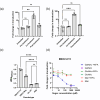
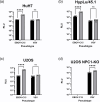
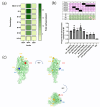
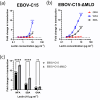
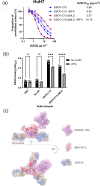
Similar articles
-
Signs and symptoms to determine if a patient presenting in primary care or hospital outpatient settings has COVID-19.Cochrane Database Syst Rev. 2022 May 20;5(5):CD013665. doi: 10.1002/14651858.CD013665.pub3. Cochrane Database Syst Rev. 2022. PMID: 35593186 Free PMC article.
-
Enhancement of Ebola Virus Infection via Ficolin-1 Interaction with the Mucin Domain of GP Glycoprotein.J Virol. 2016 May 12;90(11):5256-5269. doi: 10.1128/JVI.00232-16. Print 2016 Jun 1. J Virol. 2016. PMID: 26984723 Free PMC article.
-
Education support services for improving school engagement and academic performance of children and adolescents with a chronic health condition.Cochrane Database Syst Rev. 2023 Feb 8;2(2):CD011538. doi: 10.1002/14651858.CD011538.pub2. Cochrane Database Syst Rev. 2023. PMID: 36752365 Free PMC article.
-
Species-specific quantification of circulating ebolavirus burden using VP40-derived peptide variants.PLoS Pathog. 2021 Nov 8;17(11):e1010039. doi: 10.1371/journal.ppat.1010039. eCollection 2021 Nov. PLoS Pathog. 2021. PMID: 34748613 Free PMC article.
-
Systemic pharmacological treatments for chronic plaque psoriasis: a network meta-analysis.Cochrane Database Syst Rev. 2017 Dec 22;12(12):CD011535. doi: 10.1002/14651858.CD011535.pub2. Cochrane Database Syst Rev. 2017. Update in: Cochrane Database Syst Rev. 2020 Jan 9;1:CD011535. doi: 10.1002/14651858.CD011535.pub3. PMID: 29271481 Free PMC article. Updated.
References
MeSH terms
Substances
LinkOut - more resources
Full Text Sources
Medical
Research Materials

